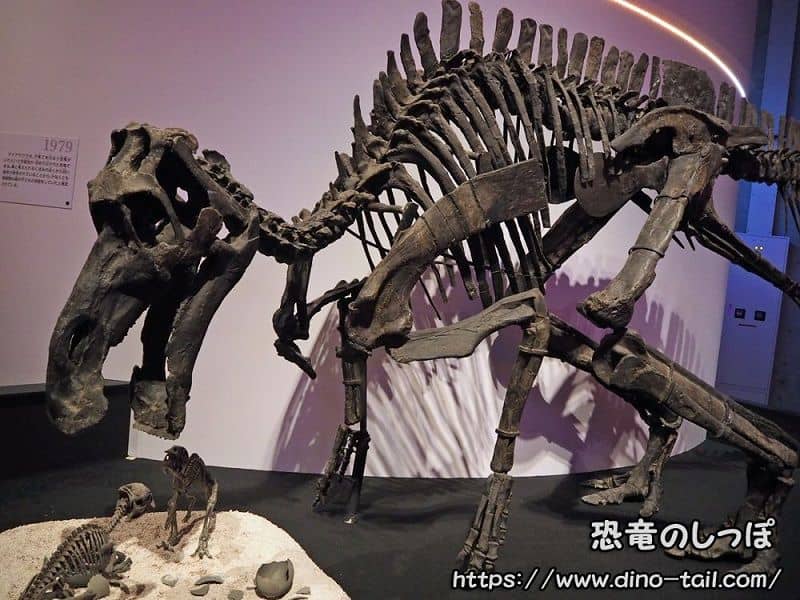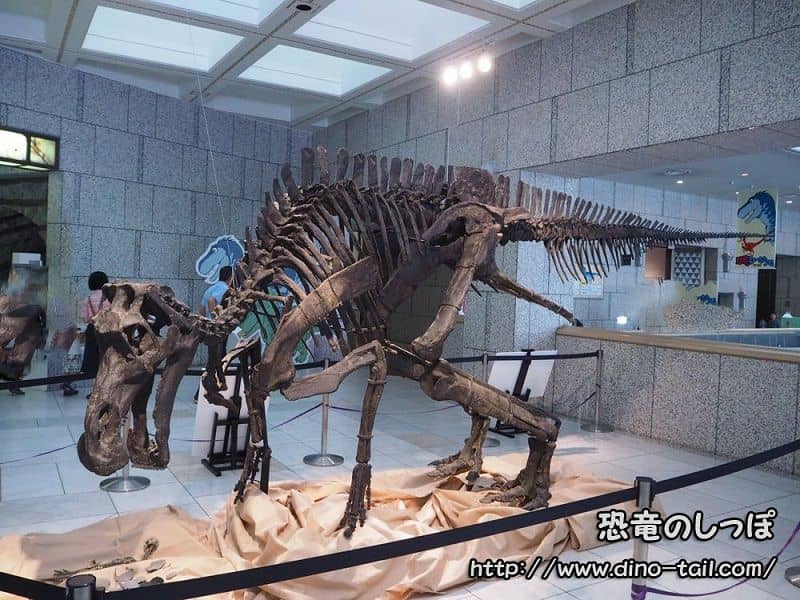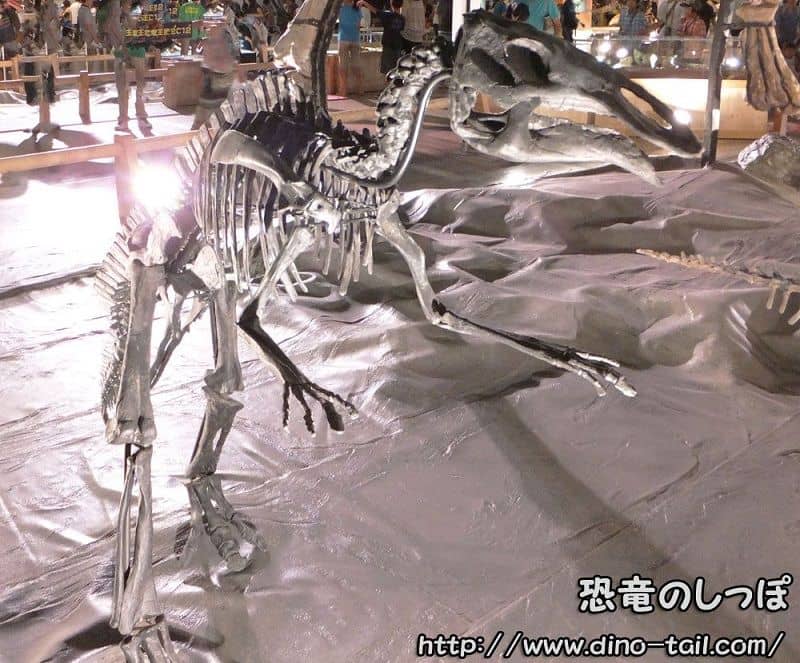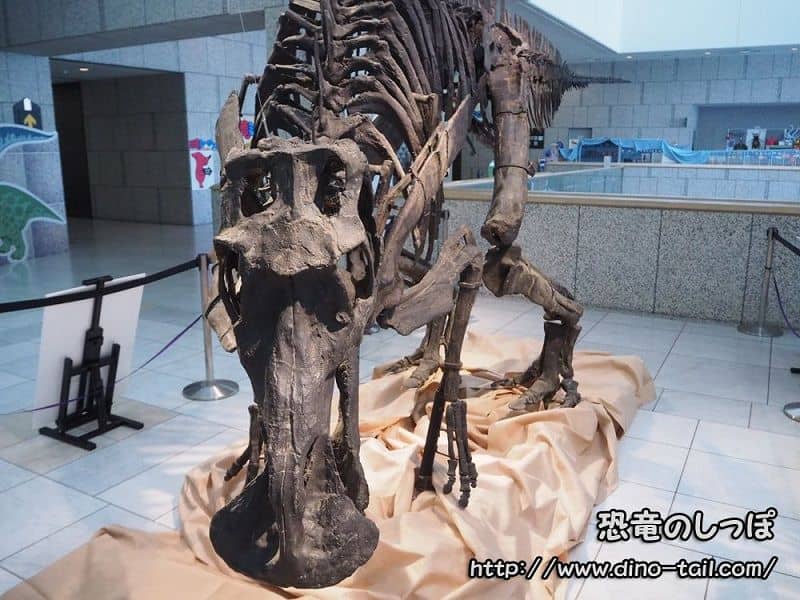About Maiasaura
| Scientific Name (Genus) | Maiasaura |
| Meaning of Name |
Good mother lizard
maia (good mother) [Greek] - saura (lizard) [Greek] |
| Classification | Ornithischia, Ornithopoda (Hadrosauridae, Saurolophinae ) |
| Total Length | Approx. 8 - 9m |
| Diet | Herbivorous |
| Period | Late Cretaceous |
| Species |
Maiasaura peeblesorum
*The species name peeblesorum honors the Peebles family, who owned the land where the fossils were found. |
| Year of Paper Publication | 1979 |
| Genus Name Publication |
Nest of juveniles provides evidence of family structure among dinosaurs.
Nature. 282. by John R. Horner.; Robert Makela. 1979. |
Features
Maiasaura was an ornithopod that lived in North America during the Late Cretaceous period, named the 'good mother lizard' because of the groundbreaking evidence discovered that it raised its young in groups.
Unlike its relatives in the Lambeosaurinae subfamily, it did not have a large, hollow crest, but it did have a small, solid bony ridge (crest) in front of its eyes. This is thought to have been used primarily for display to recognize its own kind or for males to compete by pushing their heads together.

Twenty to twenty-five eggs were found in a crater-like nest about 100 cm in diameter and 50 cm deep.
Since adult Maiasaura were huge, weighing over 3 tons, it is unlikely that the parents incubated the eggs. It is presumed that they covered them with leaves and used the heat from fermentation to keep them warm.
Examining the fossils of Maiasaura less than 1 meter long (juveniles) revealed that their legs were not developed enough to walk. The fact that the teeth of these young individuals, who were too small to walk, were already worn indicates that they were able to eat tough leaves (food) even while in the nest. It is thought that the Maiasaura parents tore off leaves with their duck-like bills and brought food to their children.
(In recent years, worn teeth have also been found in unhatched babies (in the egg), and some scholars argue that 'the wear on juvenile teeth is not evidence of being fed').
The Growth of Maiasaura
Fossils from various growth stages, from [egg] to [adult], have been found. Research on their growth is actively being conducted.

Newly hatched Maiasaura were less than 50 cm long, but they spent the first 1-2 months in the nest and exceeded 3 meters in length by the time they were one year old.
Their growth rate slowed down after that, and they reached adulthood at 7-8 years of age.
Adult Maiasaura reached a length of 8-9 meters.
Egg Mountain and Life in Large Herds
The nesting site in Montana where Maiasaura fossils were discovered is known by the nickname " Egg Mountain " due to its importance. Fossils of Maiasaura of all ages, from eggs, hatchlings, and juveniles to adults, have been found at this location.
More importantly, the nests were arranged in an orderly fashion, spaced about 7 meters apart (about the same as the length of an adult Maiasaura). This indicates that they returned to the same location every year to form huge nesting colonies.
Furthermore, a massive bonebed (a layer with a high concentration of fossils) has been found in a nearby formation, where an estimated 10,000 Maiasaura died at once. This evidence tells us that Maiasaura lived and moved in huge, multi-generational 'herds' of thousands to tens of thousands. They may have been the 'bison' of the Cretaceous period.
Discovery and Description

Source: Nest of juveniles provides evidence of family structure among dinosaurs.
Nature. 282.
by John R. Horner.; Robert Makela. 1979.
In 1979, fossils known by the specimen number PU 22405 were discovered in the Two Medicine Formation in western Montana, USA.
Egg fossils and newly hatched juveniles were known, and in the same year, Dr. John R. Horner and Robert R. Makela described Maiasaura peeblesorum in a paper published in the world-renowned scientific journal Nature, titled "Nest of juveniles provides evidence of family structure among dinosaurs." "Maia" is a Greek word meaning "good mother."
Maiasaura Stamp & Fossil Gallery




